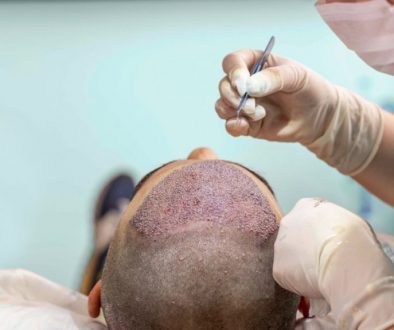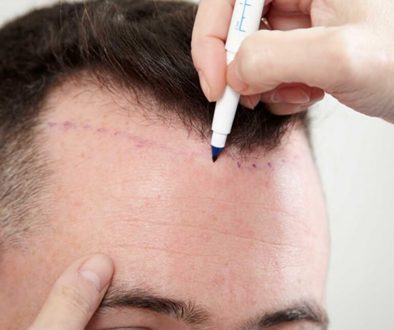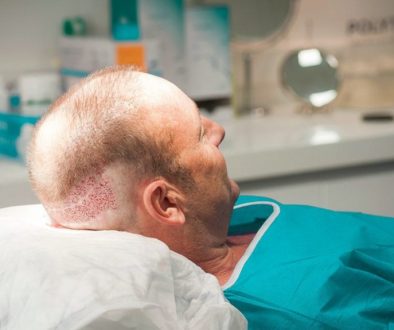Ultra Mega Session Hair Transplants – Are the grafts “Sub Follicular” units?
I’m thinking about getting a [tag]hair transplant[/tag]. I’m 34 and have been thinning on the crown and front for about 10 years. I’d say I’m a Norwood Class 3V. I live in Ireland and there are 2 surgeons that perform [tag]hair transplants[/tag]. However the [tag]hair transplant surgeon[/tag] I consulted with, Dr. Kiely, said the maximum number of grafts he will create in one session is about 1400. I told him of clinics (such as Hasson & Wong) that transplant up to 3000 grafts in a single session. He said he doesn’t understand how they can do this. He guesses that they are splitting the follicular units into smaller grafts to increase the number of grafts. Would this be true? Is it possible to get over 3000 grafts with out splitting the follicular units apart?
I do believe that a patient with very good elasticity and density in the donor area can achieve 3,000 plus grafts that are not 3 and 4 hair follicular units that have been trimmed into 1 and 2 hair “sub follicular” unit grafts. In fact, in my opinion, the leading edge hair transplant clinics have developed the capability to provide 3,000 plus grafts when it is appropriate for a patient.
However, I do believe that not all clinics’ follicular unit grafts average the same number of hairs. Some [tag]hair restoration clinics[/tag] tend toward cutting smaller grafts that contain fewer hairs per graft, while other clinics create grafts that may even contain two follicular units that are right next to each other – referred to as “follicular unit families”. These follicular unit family grafts may contain 3, 4 or even 5 hairs per graft and are typically placed into the midscalp region to create increased density and fullness. Some [tag]hair transplant clinics[/tag] also place more than one follicular unit graft into the same incision. This is referred to as a “double follicular unit” graft. For example, if a patient has very few naturally occurring 4 hair grafts, a surgeon may opt to combine a couple of two hair grafts and place them into one incision to create a more robust graft that is similar to a 4 hair [tag]follicular unit[/tag] graft.
Thus the number of hairs that may be contained in a “follicular unit” graft can vary depending upon both the clinic (the way they choose to trim grafts) and the patient’s characteristics (i.e. some patients have more hairs per follicular unit on average than others).
Therefore to enable potential [tag]hair transplant patients[/tag] to get a more accurate picture of how many hairs are actually being transplanted (i.e. a real apples to apples comparison), I encourage all clinics and patients who are posting their results to give both graft and hair counts for their surgical sessions. Providing the size of the donor strip (i.e. 1.4 cm wide by 14 cm long etc) would also be useful information.
No physician has a magic wand that enables them and their staff to yield more hair from a given patient’s donor area. They all use scalpels.
However, some clinics do maintain a large staff of medical technicians who can yield the maximum number of grafts from a patient during a single [tag]hair transplant[/tag] session. Only those clinics that have expanded their capacity to enable them to do large patient friendly sessions of densely packed grafts are eligible for membership in the [tag]Coalition of Independent Hair Restoration Physicians[/tag].
The bar for excellence has been raised higher in the past few years. But unfortunately not all clinics have expanded their capacity and skills to be world class.
Thanks for your important question.
Pat – Publisher of the Hair Transplant Network.com and the Hair Loss Learning Center.org




September 7, 2006 @ 10:36 pm
There is no such thing as a “sub follicular unit”. The only entity that might even qualify for this title is a transected graft. You either have a fully intact “follicular unit” or you have multiple follicular units bound together in one graft which is simply known as the “minigraft”. To me, “sub follicular units” and “follicular families” are only slang terminology whose meaning shifts from practitioner to practitioner (sometimes criminally so) and is therefore unreliable and useless.
Drs. Hasson and Wong’s philosophy is relatively simple, yet few doctors have embraced it: ‘Dissect your donor tissue down to the lowest follicular unit grouping possible and then re-implant those grafts close together.’ This is what nature did. Any reasonable person, doctor or otherwise, would have to agree with this concept, however, to actually achieve this goal requires major changes in even the best hair transplant clinics:
1. Lateral slits must be employed to allow for dense packing with minimal popping.
2. Grafts must be dissect FAR more meticulously and carefully
3. Staff must be enlarged to handle the increase refinement
4. The recipient sites must be made far smaller than before. Rarely a slit above 1mm
5. Placing smaller grafts into smaller slits requires greater skill, patience, and teamwork
6. The overall time necessary to perform a procedure increases
7. The overall overhead costs increase
Any objection by HT doctors and their “consultants” against ultra-refined megasessions as performed by Drs. Hasson and Wong may be attributed directly to the resistance and refusal to rise to the challenges created by the seven changes listed above (among others). This is why whenever I read of an objection to these ultra megasessions I just tune them out. These arguments are mostly made by doctors who are simply looking for a justification not to rise to the new level set by these two excellent doctors. Here are the most popular yet unjustified reasons most clinics use when asked why they don’t perform ultra megasessions:
1. The scalp’s blood supply can’t handle such large cases.
2. The grafts can’t stay out of the body that long
3. The donor area can’t handle that amount of trauma
4. The patient can’t sit that long in the chair
5. The staff can’t handle that much work
6. The scar will be larger than if two or more smaller procedures were done.
It is beyond the scope of this “comment” to go into depth on why each of the above are not true, but I will say that each one has an easy solution IF the doctor and the clinic rise to the challenge of instituting the changes I listed above.
I know this because I met Dr. Hasson at an HT meeting in 2002 and listened to him speak about his philosophy and method in detail. He made his point and supported it with reason, photos and a live patient. I realized I had to improve my procedures to this level and incorporated his techniques into my practice. The improvement in results that could be attained in just one surgery was remarkable. Yes it was hard and it was expensive, but the results speak for themselves.
The way of the future is ultra refined megasessions. To do less than 2,500 to 3,000 grafts in a single session should become a rarity, and until it does, this field will not have achieved it’s full potential. Out of the thousands of clinics performing HT worldwide, there are perhaps 5 or 6 that have seemed to embrace the ultra megasession. This number must increase and all doctors need to put the effort in to do so.